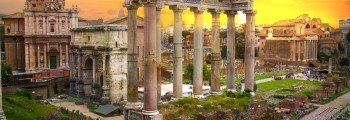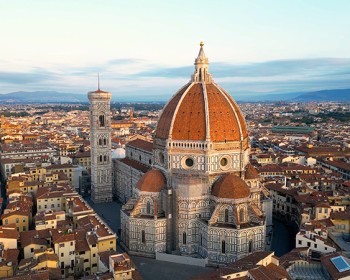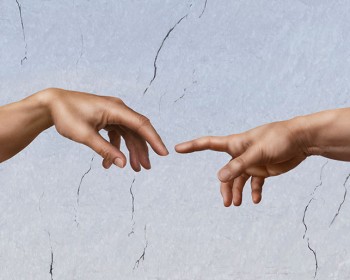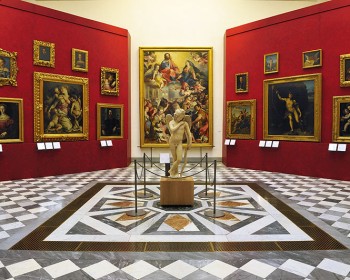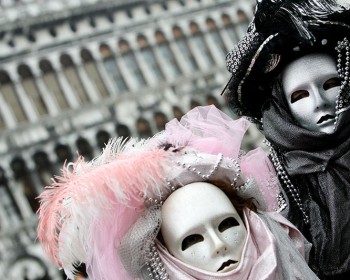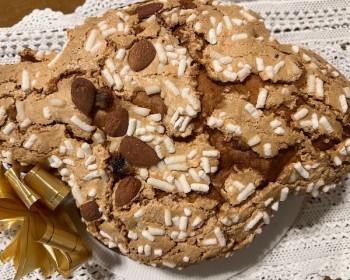One of the best moments to visit the “Boot” Peninsula is during your Easter holidays. This is, first of all, because you will find the most pleasant weather Italy offers during the year, but also because of the atmosphere, you will breathe in the streets during this festivity. Indeed, in Easter, traditions, uses, and festivals, liven up Italian regions and cities.
The date of Easter is variable even though it always falls between the 22nd of 25th of April (this year it will be on the 21st of April). Its variability depends on the fact that it always falls on a Sunday that follows the first full moon after the spring equinox.
All the Christian world celebrate Easter, but Italy is full of traditions connected with this period, as the many costumes representations people can admire in any corner of the country.
Pasquetta
The Italian Pasquetta is what we all commonly know as Easter Monday, and it literally means “Little Easter”. It is, then, the day (Monday) after Easter and it is not a real festivity, but a modern anniversary created to extend the duration of Easter holidays, to spend more time celebrating with family and friends.
Furthermore, in some Italian cities, such as Giugliano (in Campania), Marano di Napoli (Naples), Formello (Rome), and Cupertino (Lecce), the Pasquetta is celebrated on Tuesday that follows Easter. In Carovigno (Brindisi), Easter celebration is even longer: they celebrate Monday, Tuesday, and Saturday after Easter, and they called this Saturday the Sabato di Belvedere (Belvedere Saturday) or Pasquetta dei Carovignesi (the Little Easter of the People of Carovigno).
Northern Italy's Easter Traditions
In the mountains
The very Northern part of Italy, which is characterized by the great number of mountain ranges, celebrates Easter in very particular ways and with some specific and peculiar traditions.
In Courmayeur, Valle d’Aosta, La Paquerette is an annual celebration with handcraft that proposes the creation of handmade products, such as wood sculptures and intaglio carving, wrought iron and leather production, lace weaving and osier weaving, and creation of household goods.
San Leonardo is a district of Badia where people use to celebrate the Noza de Paur in the days that precede Easter. The Noza de Paur is the event that recalls a farmer wedding, where the boys look for young girls and ask them an egg. The one who receives 12 eggs will get married in the following year; on the other hand, the girls who have exceeded eggs need to bury them under the ground within the following Tuesday to avoid remaining all life spinster.
Finally, in Bormio (Valtellina), huge parade floats are carried shoulder high in processions along the all city center.
Games with eggs
Beyond the classic egg scavenger hunt; in Italy, there are many traditional games that include the use of eggs.
One of the most interesting customs comes from Friuli: in Cividale (Udine) during Easter and Easter Monday the Truc game takes place. It consists of letting some eggs slide on a sloped basin of sand with the aim of make them touch one with the other: the kid who hits the rival's egg wins a prize.
The Gioco della Punta e Cul from Urbania (Marche) is based on the use of cooked eggs too. The morning of Easter and of the two following days, young and elderly people face each other in a challenge based, again, on the collision of eggs: the person who starts hits his or her egg with the rival’s one, before on the top, then on the bottom, trying to keep it intact.
In Tredozio (on the Apennines of Forlì), there is a very similar game than the one from the Marche: it differs from the first one in the aim, instead of keeping the eggs intact, they have to break the other’s eggs with their own.
Cantè J'euv
In Piedmont, in the Langhe and Roero, the Cantè J’euv game recalls the farmer ritual of the past centuries. In the past, groups of young people used to walk to reach the farther farmsteads to sing by the landlord’s windows asking for donations. The farmers usually went down and game them fresh eggs, that the youngs used to keep until the Easter Monday. On the contrary, families who refused their donation used to be cursed. Today, the locals remember the Cantè J’euv with folkloristic rituals based on good music and food.
Might Interest You:
Central Italy's Easter Traditions
Central Italy is worldwide known and appreciated for its two most famous cities, Rome and Florence, and it is here where you can find the most interesting Easter traditions.
Florence
In Florence, Tuscan people celebrate the famous tradition of the Scoppio del Carro, which means “Float Explosion”. In Piazza del Duomo, the archbishop fires up a decorated float, which is called Brindellone. The archbishop makes a dove-shaped rocket, called the Colombina, slip on a string so it seems to fly out from the church to reach, hit and light up the float, creating pyrotechnic effects.
Discover our -> Florence Small Group Tours
Rome
In Rome, the Via Crucis is not only famous but also very important for the Italian and Catholic culture. Indeed, even the Pope takes part in the celebration, which occurs in front of the Colosseum, creating an amazing and meaningful combination of sacred rituals and heathen architecture.
Discover our -> Rome Day Trips
Southern Italy's Easter Traditions
And if Northern and Central Italy are full of Easter celebrations and traditions, the Southern part is clearly not to be outdone.
First of all, in Procida (Campania) during the Maundy Thursday sunset, the hood twelve apostles procession takes place.
In Taranto, local people celebrate Easter in a similar way than the previous one. In fact, between the Thursday and the Saturday sunrise, many hoods devoted, the so-called Perdoni, pass by in a procession. (This is almost the same celebration that takes place in Seville)
In Noicattaro (Bari), a devotion gesture is dedicated to the Madonna della Lama: people start a bonfire in front of the church dedicated to the Madonna and let it fire up all night long, as a form of worship.
Sicily
The region that has more tradition in Italy is definitely Sicily. Among the many, the most attractive are three: the Ballo dei Diavoli di Prizzi in Palermo, the Diavulazzi ‘i Pasqua in Adrano, and the Festa dei Giudei in San Fratello, Messina.
BALLO DEI DIAVOLI DI PRIZZI
In Palermo, since the morning of Easter, two masked devils dressed up in red and Death dressed up in yellow bother the bystanders trying to block them to meet the Virgin Mary and the Risen Jesus. Finally, the angels will defeat them, piercing them with their swords in a festive mood, lighten up by the sound of the bells.
I DIAVULAZZI ‘I PASQUA
In Adrano (Catania), a similar depiction takes place, again with the presence of the devils. Here, I Diavulazzi ‘i Pasqua is an eighteenth-century representation that happens the Easter Sunday and that perform a fight between hell and heaven, ending up with the triumph of good over evil.
FESTA DEI GIUDEI
The Festa dei Giudei is the way people celebrate Easter in San Fratello, in the area of Messina. Here, shepherds and farmers go along the city’s streets and disturb the procession hooded and dressed up with very peculiar traditional costumes. These costumes are red and embellished with yellow strips of cloth and floral motives and pearls. These people’s clothing is used to represent the devil; indeed, as previously said, they walk along and bother people during the procession of commemoration for Jesus’s death and, after having interrupted it, they start a fight with the devoted.
Discover our -> Naples Day Trips

